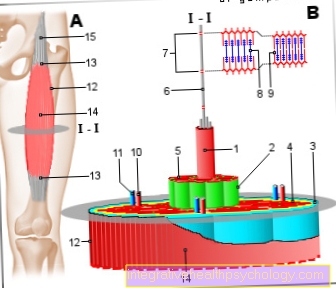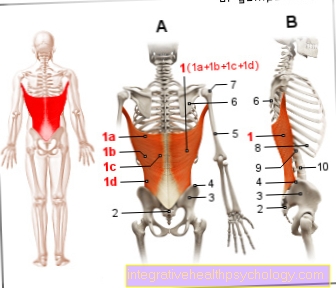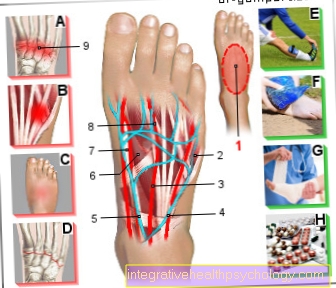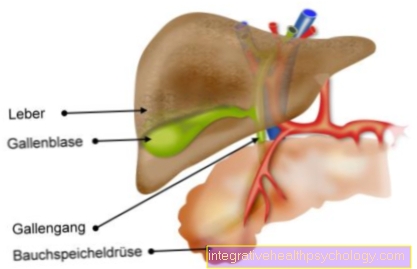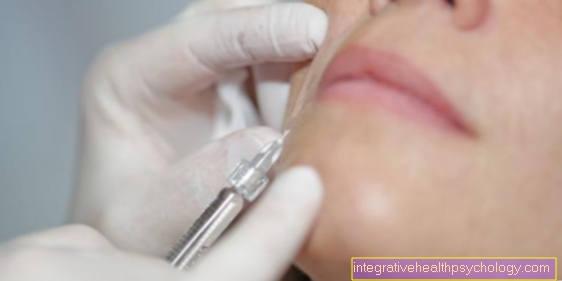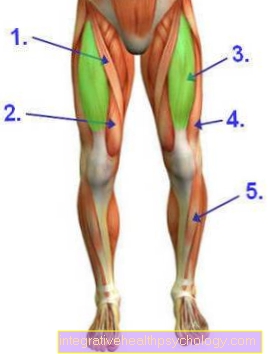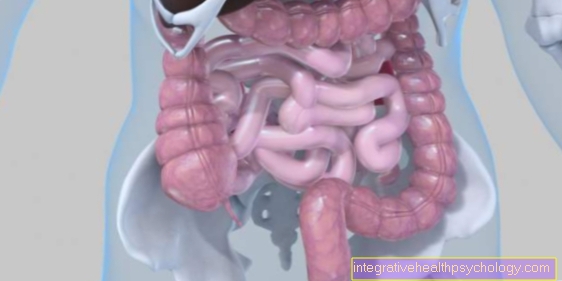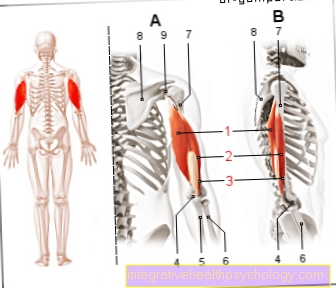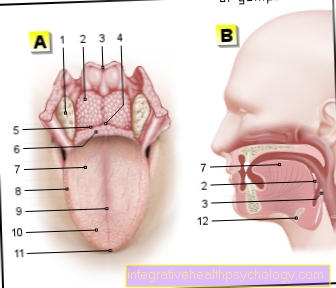The pseudocholinesterase
Definition - what is pseudocholinesterase?
Pseudocholinesterase is an enzyme that splits an ester bond with the help of water, this process is also known as hydrolytic ester splitting. The enzyme is found almost everywhere; particularly high concentrations can be found in the blood, liver and pancreas.
The enzyme is mainly relevant when there is a deficiency, as complications can arise with general anesthesia. An ester is a combination of an acid and an alcohol. There are different types of acids and alcohols that can react with one another to form an ester. The products that result from this reaction are therefore also very diverse. The pseudocholinesterase mainly splits cholinester. The best-known and most common choline ester is acetylcholine, which is a very important messenger substance that is ubiquitous in the body.

The function and effect
The pseudocholinesterase has different functions, since not only a single substance is converted by this enzyme. In addition to the substance that is mainly converted, namely acetylcholine, cocaine, heroin, aspirin and various muscle relaxants are also broken down. It is believed that the main task of pseudocholinesterase is to render ineffective acetylcholine that is not in the synaptic cleft. The synaptic cleft is the site of action for acetylcholine. This gap is the connection between nerve cells and these communicate among other things via the messenger substance acetylcholine.
The ability to break down other substances means that they are quickly broken down in the bloodstream. An important example are muscle relaxants used during anesthesia. These are given so that the operation can be performed without involuntary movements on the part of the patient. These only have a very short duration of action and are therefore usually easy to dose.
This short period of action is due to the breakdown of the substance in the bloodstream by pseudocholinesterase. The relatively short effects of heroin and cocaine are also partly due to the breakdown caused by the pseudocholinesterase.
For more information, read on here: Acetylcholine.
What happens with a pseudocholinesterase deficiency?
A lack of pseudocholinesterase may not be noticed. The substances that are converted by the enzyme can also be broken down by related enzymes. For example, acetylcholine is mainly broken down by acetylcholine esterase. This enzyme specifically splits acetylcholine, but other substances that occur naturally in the body are also broken down by other enzymes.
The lack of pseudocholinesterase only becomes noticeable when the person concerned is given general anesthesia during an operation. If certain muscle relaxants are used during this operation, they cannot be broken down as quickly as usual. Mivacurium and Suxamethonium are the remedies that deserve special mention. Both act differently, but are mainly broken down by pseudocholinesterase. They are broken down more slowly due to the deficiency or also due to a defective pseudocholinesterase.
A muscle relaxant causes the respiratory muscles not to work either. It is important to know if breathing will resume when the muscle relaxant is stopped. Otherwise, the patient must be ventilated for longer and the anesthesia maintained.
Read more on the subject here Muscle relaxants.
What is that dangerous?
The lack of pseudocholinesterase is dangerous mainly in operations that require relaxation of the muscles. However, it is only dangerous if it is not recognized that breathing will not start again. Normally, the awakening situation is observed very closely by the anesthetists, the anesthetists.
In the event of failure to breathe, the patient remains artificially ventilated. The risk to the patient in this situation is therefore relatively low. If the lack of pseudocholinesterase is known, the dosage of the medication can be reduced accordingly.
Find out more about the topic here Risks of anesthesia.


